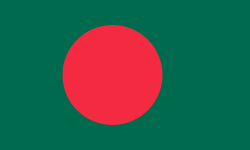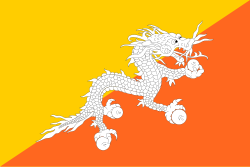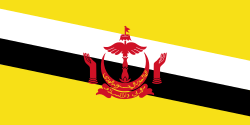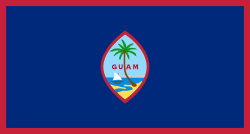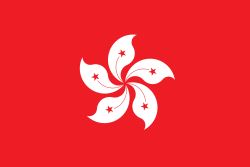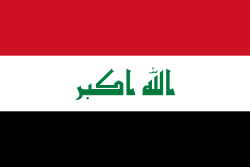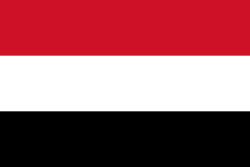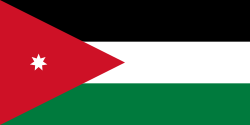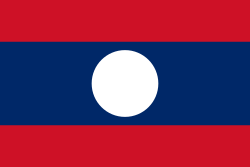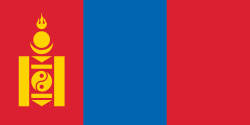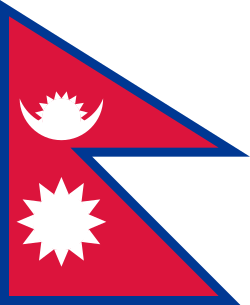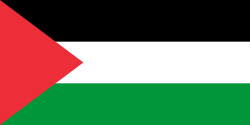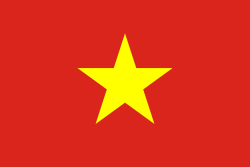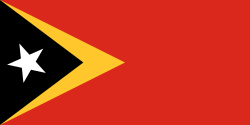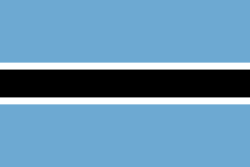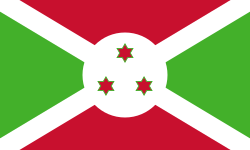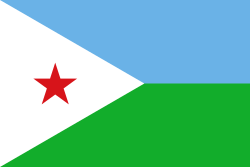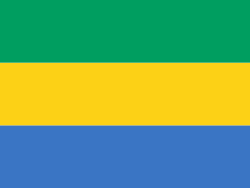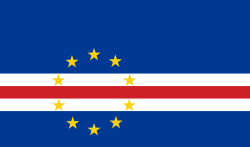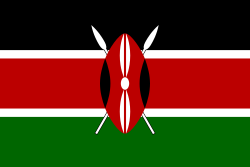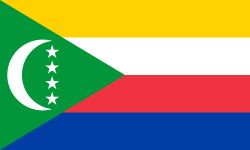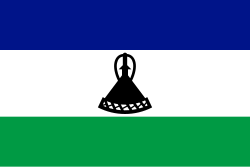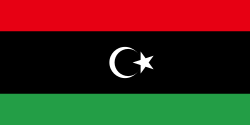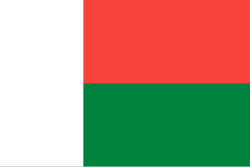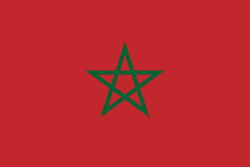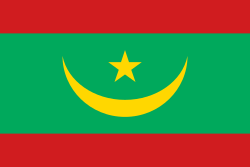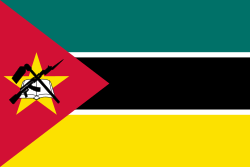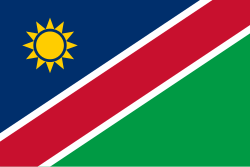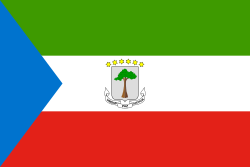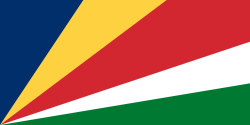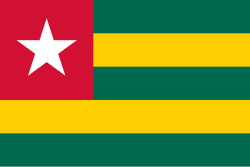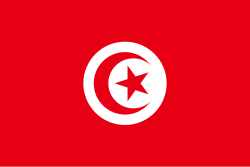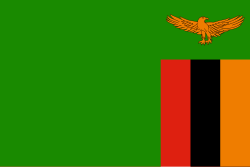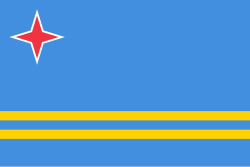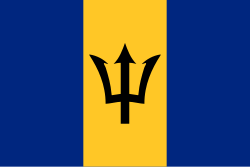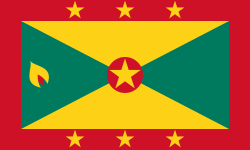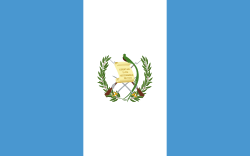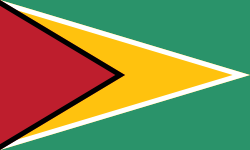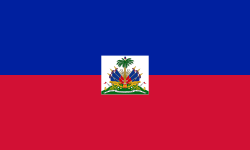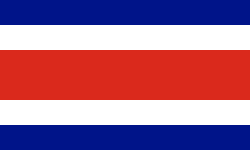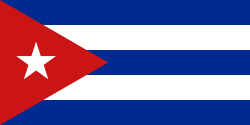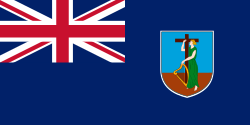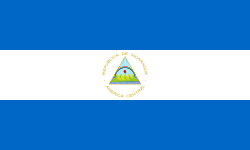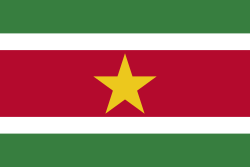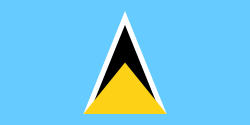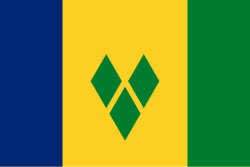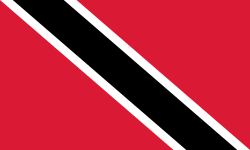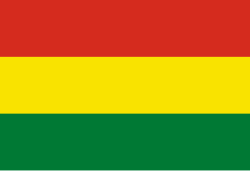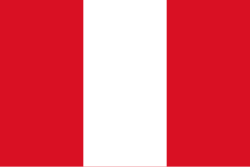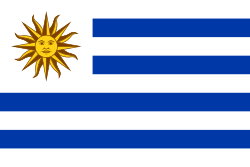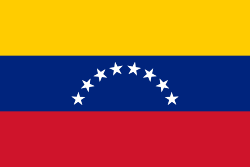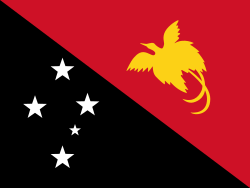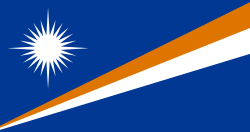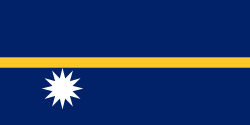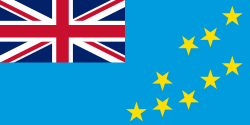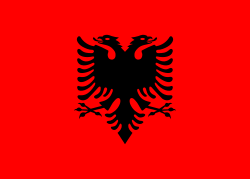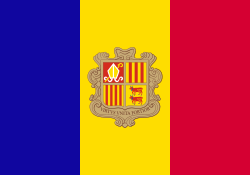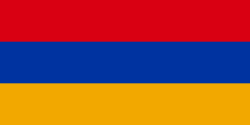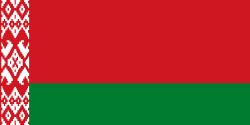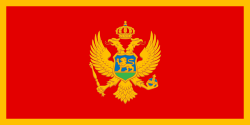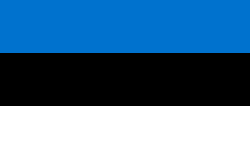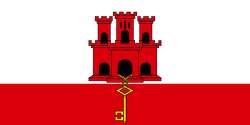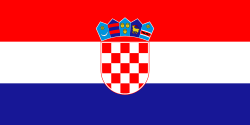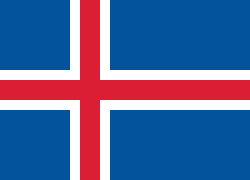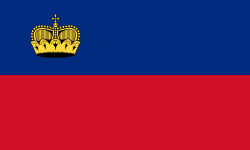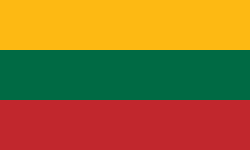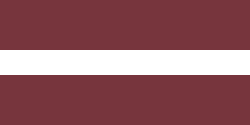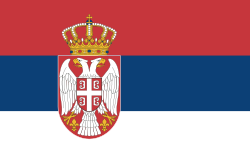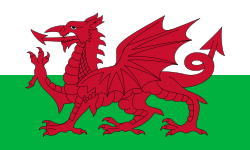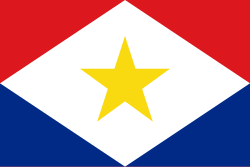Seznam mužských fotbalových reprezentací
Toto je seznam mužských fotbalových reprezentačních týmů z celého světa.
Fotbalové federace

Dnes na světě existuje celkem 209 mužských národních fotbalových týmů, které jsou soustředěny pod celosvětovou fotbalovou asociací FIFA. Tyto týmy jsou rozděleny podle příslušnosti k danému kontinentu do šesti fotbalových konfederací.
- Afrika – CAF (Confédération Africaine de Football)
- Asie – AFC (Asian Football Confederation)
- Evropa – UEFA (Union of European Football Associations)
- Severní a Střední Amerika a Karibik – CONCACAF (Confederation of North, Central America and Caribbean Association Football)
- Jižní Amerika – CONMEBOL (Confederación Sudamericana de Fútbol)
- Oceánie – OFC (Oceania Football Confederation)
AFC (Asie)
 Afghánistán
Afghánistán Austrálie[pozn. 1]
Austrálie[pozn. 1] Bahrajn
Bahrajn Bangladéš
Bangladéš Bhútán
Bhútán Brunej
Brunej Čína
Čína Filipíny
Filipíny Guam
Guam Hongkong
Hongkong Indie
Indie Indonésie
Indonésie Írán
Írán Irák
Irák Japonsko
Japonsko Jemen
Jemen Jordánsko
Jordánsko Kambodža
Kambodža Katar
Katar KLDR
KLDR Korejská republika
Korejská republika Kuvajt
Kuvajt Kyrgyzstán
Kyrgyzstán Laos
Laos Libanon
Libanon Macao
Macao Malajsie
Malajsie Maledivy
Maledivy Mongolsko
Mongolsko Myanmar
Myanmar Nepál
Nepál Omán
Omán Pákistán
Pákistán Palestina
Palestina Saúdská Arábie
Saúdská Arábie Severní Mariany (asociovaný člen)
Severní Mariany (asociovaný člen) Singapur
Singapur Spojené arabské emiráty
Spojené arabské emiráty Srí Lanka
Srí Lanka Sýrie
Sýrie Tádžikistán
Tádžikistán Thajsko
Thajsko Tchaj-wan
Tchaj-wan Turkmenistán
Turkmenistán Uzbekistán
Uzbekistán Vietnam
Vietnam Východní Timor
Východní Timor
Členem zatím není -
CAF (Afrika)
 Alžírsko
Alžírsko Angola
Angola Benin
Benin Botswana
Botswana Burkina Faso
Burkina Faso Burundi
Burundi Čad
Čad Demokratická republika Kongo
Demokratická republika Kongo Džibutsko
Džibutsko Egypt
Egypt Eritrea
Eritrea Etiopie
Etiopie Gabon
Gabon Gambie
Gambie Ghana
Ghana Guinea
Guinea Guinea-Bissau
Guinea-Bissau Jihoafrická republika
Jihoafrická republika Jižní Súdán
Jižní Súdán Kamerun
Kamerun Kapverdy
Kapverdy Keňa
Keňa Komory
Komory Konžská republika
Konžská republika Lesotho
Lesotho Libérie
Libérie Libye
Libye Madagaskar
Madagaskar Malawi
Malawi Mali
Mali Maroko
Maroko Mauricius
Mauricius Mauritánie
Mauritánie Mosambik
Mosambik Namibie
Namibie Niger
Niger Nigérie
Nigérie Pobřeží slonoviny
Pobřeží slonoviny Réunion[pozn. 1]
Réunion[pozn. 1] Rovníková Guinea
Rovníková Guinea Rwanda
Rwanda Senegal
Senegal Seychely
Seychely Sierra Leone
Sierra Leone Somálsko
Somálsko Středoafrická republika
Středoafrická republika Súdán
Súdán Svatý Tomáš a Princův ostrov
Svatý Tomáš a Princův ostrov Svazijsko
Svazijsko Tanzanie
Tanzanie Togo
Togo Tunisko
Tunisko Uganda
Uganda Zambie
Zambie Zanzibar[pozn. 1]
Zanzibar[pozn. 1] Zimbabwe
Zimbabwe
Členem zatím není -
CONCACAF (Severní a Střední Amerika a Karibik)
 Americké Panenské ostrovy
Americké Panenské ostrovy Anguilla
Anguilla Antigua a Barbuda
Antigua a Barbuda Aruba
Aruba Bahamy
Bahamy Barbados
Barbados Belize
Belize Bermudy
Bermudy ¹Bonaire
¹Bonaire Britské Panenské ostrovy
Britské Panenské ostrovy Curaçao
Curaçao Dominika
Dominika Dominikánská republika
Dominikánská republika Francouzská Guyana[pozn. 1]
Francouzská Guyana[pozn. 1] Grenada
Grenada Guadeloupe [pozn. 1]
Guadeloupe [pozn. 1] Guatemala
Guatemala Guyana
Guyana Haiti
Haiti Honduras
Honduras Jamajka
Jamajka Kajmanské ostrovy
Kajmanské ostrovy Kanada
Kanada Kostarika
Kostarika Kuba
Kuba Martinik [pozn. 1]
Martinik [pozn. 1] Mexiko
Mexiko Montserrat
Montserrat Nikaragua
Nikaragua Panama
Panama Portoriko
Portoriko Saint-Martin [pozn. 1]
Saint-Martin [pozn. 1] Salvador
Salvador Sint Maarten [pozn. 1]
Sint Maarten [pozn. 1] Surinam
Surinam Svatý Kryštof a Nevis
Svatý Kryštof a Nevis Svatá Lucie
Svatá Lucie Svatý Vincenc a Grenadiny
Svatý Vincenc a Grenadiny Trinidad a Tobago
Trinidad a Tobago Turks a Caicos
Turks a Caicos USA
USA
Členy zatím nejsou -
CONMEBOL (Jižní Amerika)
OFC (Oceánie)
Členy zatím nejsou -
UEFA (Evropa)
 Albánie
Albánie Andorra
Andorra Anglie
Anglie Arménie
Arménie Ázerbájdžán
Ázerbájdžán Belgie
Belgie Bělorusko
Bělorusko Bosna a Hercegovina
Bosna a Hercegovina Bulharsko
Bulharsko Černá Hora
Černá Hora Česko
Česko Dánsko
Dánsko Estonsko
Estonsko Faerské ostrovy
Faerské ostrovy Finsko
Finsko Francie
Francie Gibraltar
Gibraltar Gruzie
Gruzie Chorvatsko
Chorvatsko Island
Island Irsko
Irsko Izrael [pozn. 1]
Izrael [pozn. 1] Itálie
Itálie Kazachstán [pozn. 2]
Kazachstán [pozn. 2] Kosovo
Kosovo Kypr [pozn. 3]
Kypr [pozn. 3] Lichtenštejnsko
Lichtenštejnsko Litva
Litva Lotyšsko
Lotyšsko Lucembursko
Lucembursko Maďarsko
Maďarsko Malta
Malta Moldavsko
Moldavsko Německo
Německo Nizozemsko
Nizozemsko Norsko
Norsko Polsko
Polsko Portugalsko
Portugalsko Rakousko
Rakousko Rumunsko
Rumunsko Rusko
Rusko Řecko
Řecko San Marino
San Marino Severní Irsko
Severní Irsko Severní Makedonie
Severní Makedonie Skotsko
Skotsko Slovensko
Slovensko Slovinsko
Slovinsko Srbsko
Srbsko Španělsko
Španělsko Švédsko
Švédsko Švýcarsko
Švýcarsko Turecko
Turecko Ukrajina
Ukrajina Wales
Wales
- ↑ Bývalý člen AFC (v UEFA od roku 1994).
- ↑ Bývalý člen AFC (v UEFA od roku 2002).
- ↑ Je fotbalovou reprezentací Kyperské republiky. Severokyperská turecká republika má svůj vlastní reprezentační tým, který ale není členem UEFA, ani FIFA.
Členy zatím nejsou -
Týmy, které nejsou členy FIFA
Média použitá na této stránce
Flag of Australia, when congruence with this colour chart is required (i.e. when a "less bright" version is needed).
See Flag of Australia.svg for main file information.The flag of Guam, courtesy an e-mail from the author of xrmap. Modifications by Denelson83.
bendera Indonesia
Flag of Iran. The tricolor flag was introduced in 1906, but after the Islamic Revolution of 1979 the Arabic words 'Allahu akbar' ('God is great'), written in the Kufic script of the Qur'an and repeated 22 times, were added to the red and green strips where they border the white central strip and in the middle is the emblem of Iran (which is a stylized Persian alphabet of the Arabic word Allah ("God")).
The official ISIRI standard (translation at FotW) gives two slightly different methods of construction for the flag: a compass-and-straightedge construction used for File:Flag of Iran (official).svg, and a "simplified" construction sheet with rational numbers used for this file.
Flag of Laos
Flag of Maldives. The colours used are Pantone 186 C for red and Pantone 348 C for green.
Při zobrazení tohoto souboru lze snadno přidat orámování
The national flag of Kingdom of Thailand; there are total of 3 colours:
- Red represents the blood spilt to protect Thailand’s independence and often more simply described as representing the nation.
- White represents the religion of Buddhism, the predominant religion of the nation
- Blue represents the monarchy of the nation, which is recognised as the centre of Thai hearts.
Vlajka Angoly
Flag of Burkina Faso
Vlajka Etiopie
Used color: National flag | South African Government and Pantone Color Picker
| zelená | rendered as RGB 0 119 73 | Pantone 3415 C |
| žlutá | rendered as RGB 255 184 28 | Pantone 1235 C |
| červená | rendered as RGB 224 60 49 | Pantone 179 C |
| modrá | rendered as RGB 0 20 137 | Pantone Reflex Blue C |
| bílá | rendered as RGB 255 255 255 | |
| černá | rendered as RGB 0 0 0 |
Flag of Mauritania, adopted in 2017. The National Assembly added red stripes to the top and bottom edges to represent “the blood shed by the martyrs of independence”.
Flag of Namibia
Flag of the Ivory Coast, written by Jon Harald Søby, modified by Zscout370. The colors match to what is reported at http://fotw.vexillum.com/flags/ci.html.
Flag of Rwanda. The flag ratio is 2:3 with the stripes being 2:1:1. Colors are the following officially: Pantone 299 C 2X (blue), RAL 6029 (green), RAL 1023 (yellow) and RAL 1003 (golden yellow). (As of 03/08/2010, the only color used is the Pantone 299 C, which is from here. The rest of the colors are RAL shades from here.)
Flag of Senegal
The proportions of this flag are 3:2; however, there is no official definition for the correct proportions and also 5:3 is widely used.
Flag of São Tomé and Príncipe
Flag of Togo. Aspect ratio modified for projects that require an aspect ratio of 3:2.
Flag of Anguilla, adopted on 30 May 1990 and modified slightly on 25 January 1999.
The flag of Aruba
The flag of Curaçao is a blue field with a horizontal yellow stripe slightly below the midline and two white, five-pointed stars in the canton. The geometry and colors are according to the description at Flags of the World.
The flag of the Dominican Republic has a centered white cross that extends to the edges. This emblem is similar to the flag design and shows a bible, a cross of gold and 6 Dominican flags. There are branches of olive and palm around the shield and above on the ribbon is the motto "Dios,Patria!, Libertad" ("God, Country, Freedom") and to amiable freedom. The blue is said to stand for liberty, red for the fire and blood of the independence struggle and the white cross symbolized that God has not forgotten his people. "Republica Dominicana". The Dominican flag was designed by Juan Pablo Duarte, father of the national Independence of Dominican Republic. The first dominican flag was sewn by a young lady named Concepción Bona, who lived across the street of El Baluarte, monument where the patriots gathered to fight for the independence, the night of February 27th, 1844. Concepción Bona was helped by her first cousin María de Jesús Pina.
The flag of the Dominican Republic has a centered white cross that extends to the edges. This emblem is similar to the flag design and shows a bible, a cross of gold and 6 Dominican flags. There are branches of olive and palm around the shield and above on the ribbon is the motto "Dios,Patria!, Libertad" ("God, Country, Freedom") and to amiable freedom. The blue is said to stand for liberty, red for the fire and blood of the independence struggle and the white cross symbolized that God has not forgotten his people. "Republica Dominicana". The Dominican flag was designed by Juan Pablo Duarte, father of the national Independence of Dominican Republic. The first dominican flag was sewn by a young lady named Concepción Bona, who lived across the street of El Baluarte, monument where the patriots gathered to fight for the independence, the night of February 27th, 1844. Concepción Bona was helped by her first cousin María de Jesús Pina.
The national and official state flag of Haiti; arms obtained from File:Coat of arms of Haiti.svg. The civil flag can be found at here.
Note: The color selected is «turquoise blue» (the color mentioned in the decree), as defined by Pantone.
Flag of Jamaica. “The sunshine, the land is green, and the people are strong and bold” is the symbolism of the colours of the flag. GOLD represents the natural wealth and beauty of sunlight; GREEN represents hope and agricultural resources; BLACK represents the strength and creativity of the people. The original symbolism, however, was "Hardships there are, but the land is green, and the sun shineth", where BLACK represented the hardships being faced.
Flag of Canada introduced in 1965, using Pantone colors. This design replaced the Canadian Red Ensign design.
Flag of the Turks and Caicos Islands
| Flag of Bolivia* | |
|---|---|
| country | Template:I18n/Republic of Bolivia |
| used by | Bolivia |
| from | 1851 |
| until | Present |
| created by | Government of Bolivia |
| format | 15:22 |
| shape | rectangular |
| colours | červená, žlutá, zelená
flag has 3 horizontal stripes |
| other characteristics | A horizontal tricolor of red, yellow and green. |
Při zobrazení tohoto souboru lze snadno přidat orámování
Drapeaux de la France et de la Nouvelle-Calédonie côte-à-côte.
Drapeaux de la France et de la Nouvelle-Calédonie côte-à-côte.
The national flag of Nauru. Pantone 280c (Blue) and Pantone 123c (Yellow). On Pantone's official website these colours have the hexadecimal codes of #012169 and #FFC72C.
This is the national flag of Belgium, according to the Official Guide to Belgian Protocol. It has a 13:15 aspect ratio, though it is rarely seen in this ratio.
Its colours are defined as Pantone black, Pantone yellow 115, and Pantone red 032; also given as CMYK 0,0,0,100; 0,8.5,79,0; and 0,94,87,0.Vlajka České republiky. Podoba státní vlajky České republiky je definována zákonem České národní rady č. 3/1993 Sb., o státních symbolech České republiky, přijatým 17. prosince 1992 a který nabyl účinnosti 1. ledna 1993, kdy rozdělením České a Slovenské Federativní republiky vznikla samostatná Česká republika. Vlajka je popsána v § 4 takto: „Státní vlajka České republiky se skládá z horního pruhu bílého a dolního pruhu červeného, mezi něž je vsunut žerďový modrý klín do poloviny délky vlajky. Poměr šířky k její délce je 2 : 3.“
Finská vlajka
Flag of Gibraltar
Georgian flag in Pantone MS.
Při zobrazení tohoto souboru lze snadno přidat orámování
The Flag of Iceland.
- Horizontal aspect ratio: 7:1:2:1:14;
- Vertical aspect ratio: 7:1:2:1:7.
Zelený pruh má znázorňovat většinové katolické obyvatelsto Irska, oranžový pruh reprezentuje protestantskou menšinu a bílý pruh uprostřed znázorňuje mír a harmonii mezi nimi.
Flag of Liechtenstein
Flag of Portugal, created by Columbano Bordalo Pinheiro (1857-1929), officially adopted by Portuguese government in June 30th 1911 (in use since about November 1910).
Ulster Banner is a heraldic banner taken from the former coat of arms of Northern Ireland. It was used by the Northern Ireland government in 1953-1973 with Edwardian crown since coronation of Queen Elizabeth II, based earlier design with Tudor Crown from 1924. Otherwise known as the Ulster Flag, Red Hand of Ulster Flag, Red Hand Flag.
Ulster Banner is a heraldic banner taken from the former coat of arms of Northern Ireland. It was used by the Northern Ireland government in 1953-1973 with Edwardian crown since coronation of Queen Elizabeth II, based earlier design with Tudor Crown from 1924. Otherwise known as the Ulster Flag, Red Hand of Ulster Flag, Red Hand Flag.
The Flag of Vatican City State, as per the 2023 w:en:Fundamental Law of Vatican City State, reproducing Annex A which contains the official depiction of this version. See 2023 Fundamental Law of Vatican City State, art. 23, n. 1.
This 2023 flag is very similar to the flag used in the 1929 Fundamental Law of Vatican City State, see here, p. 35. Thus, it is in the public domain.
The Flag of Vatican City State, as per the 2023 w:en:Fundamental Law of Vatican City State, reproducing Annex A which contains the official depiction of this version. See 2023 Fundamental Law of Vatican City State, art. 23, n. 1.
This 2023 flag is very similar to the flag used in the 1929 Fundamental Law of Vatican City State, see here, p. 35. Thus, it is in the public domain.
Map of the members of FIFA according to their confederation, on the 1st January 2006 (before this date, see this map):
- CONCACAF – Confederation of North, Central American and Caribbean Association Football in North, Central and South America
- CONMEBOL – South American Football Confederation in South America
Map of the members of FIFA according to their confederation, on the 1st January 2006 (before this date, see this map):
- CONCACAF - Confederation of North, Central American and Caribbean Association Football in North America and Central America
- CONMEBOL - Confederación Sudamericana de Fútbol in South America
(c) Daniele Schirmo aka Frankie688, CC BY-SA 2.5
Flag of the autonomous region of the Basque Country
- A white cross over a green saltire on a red field.
The senyera, a flag of Catalonia, and also used by several lands and municipalities of the ancient Crown of Aragon



